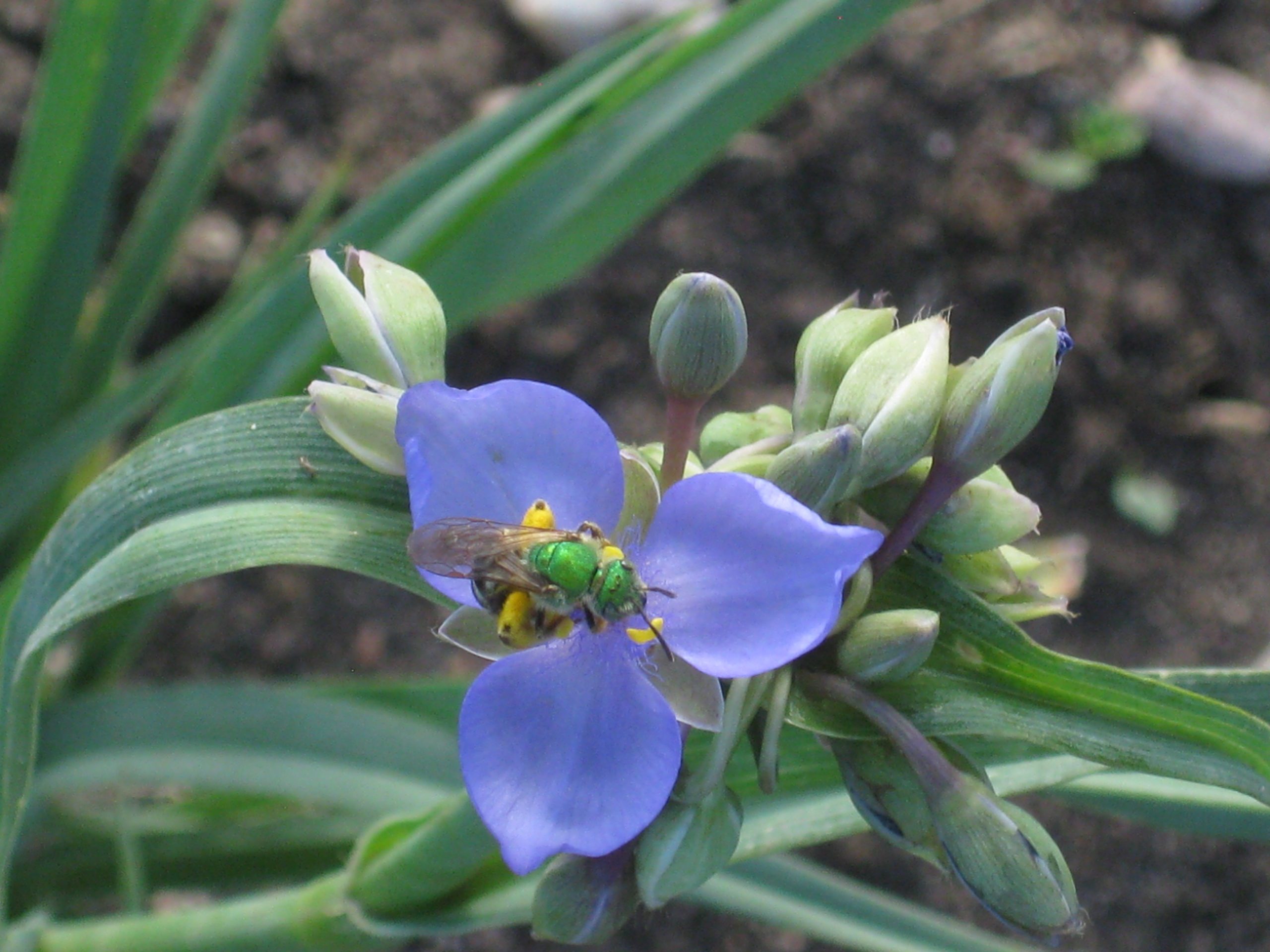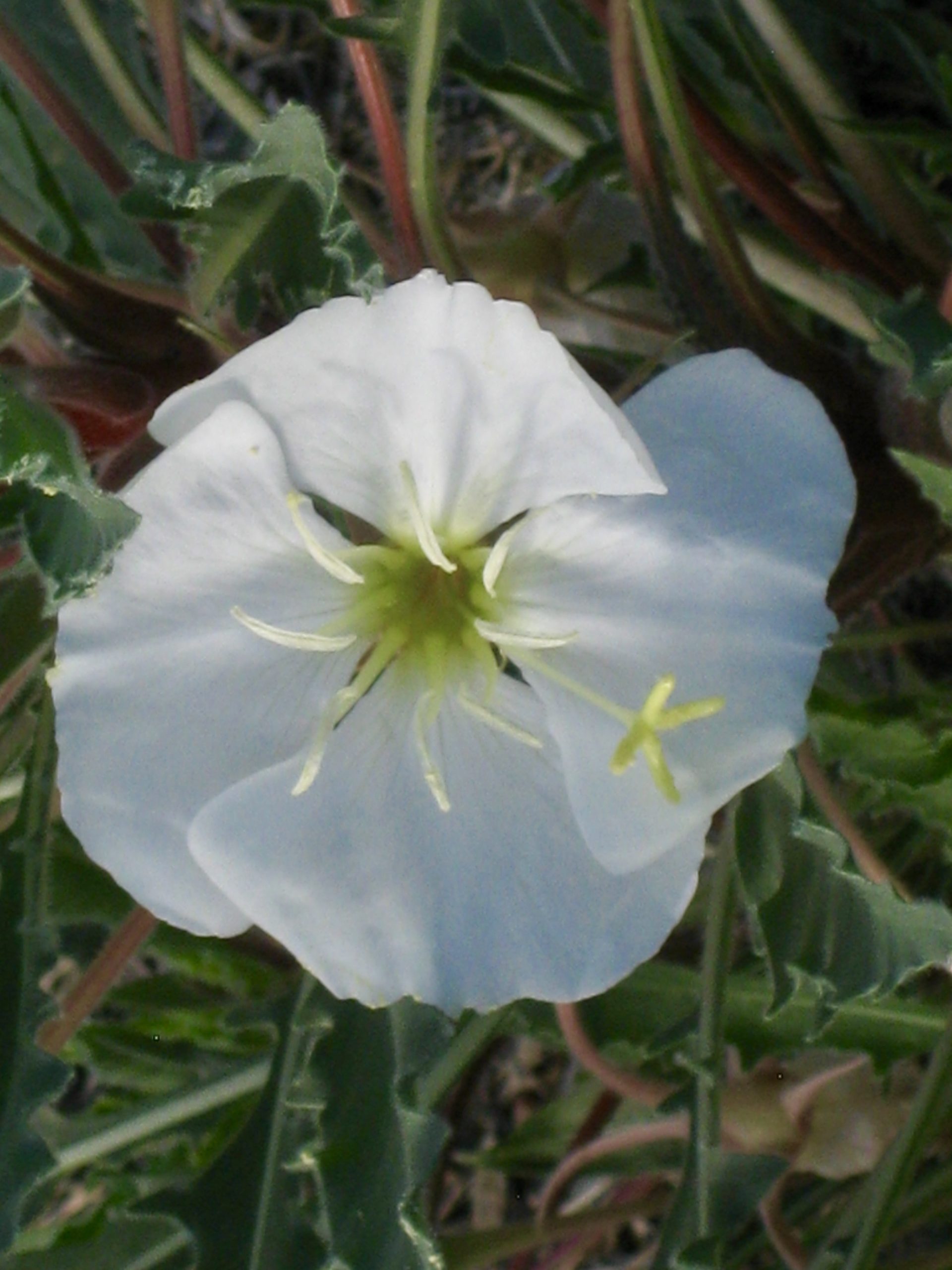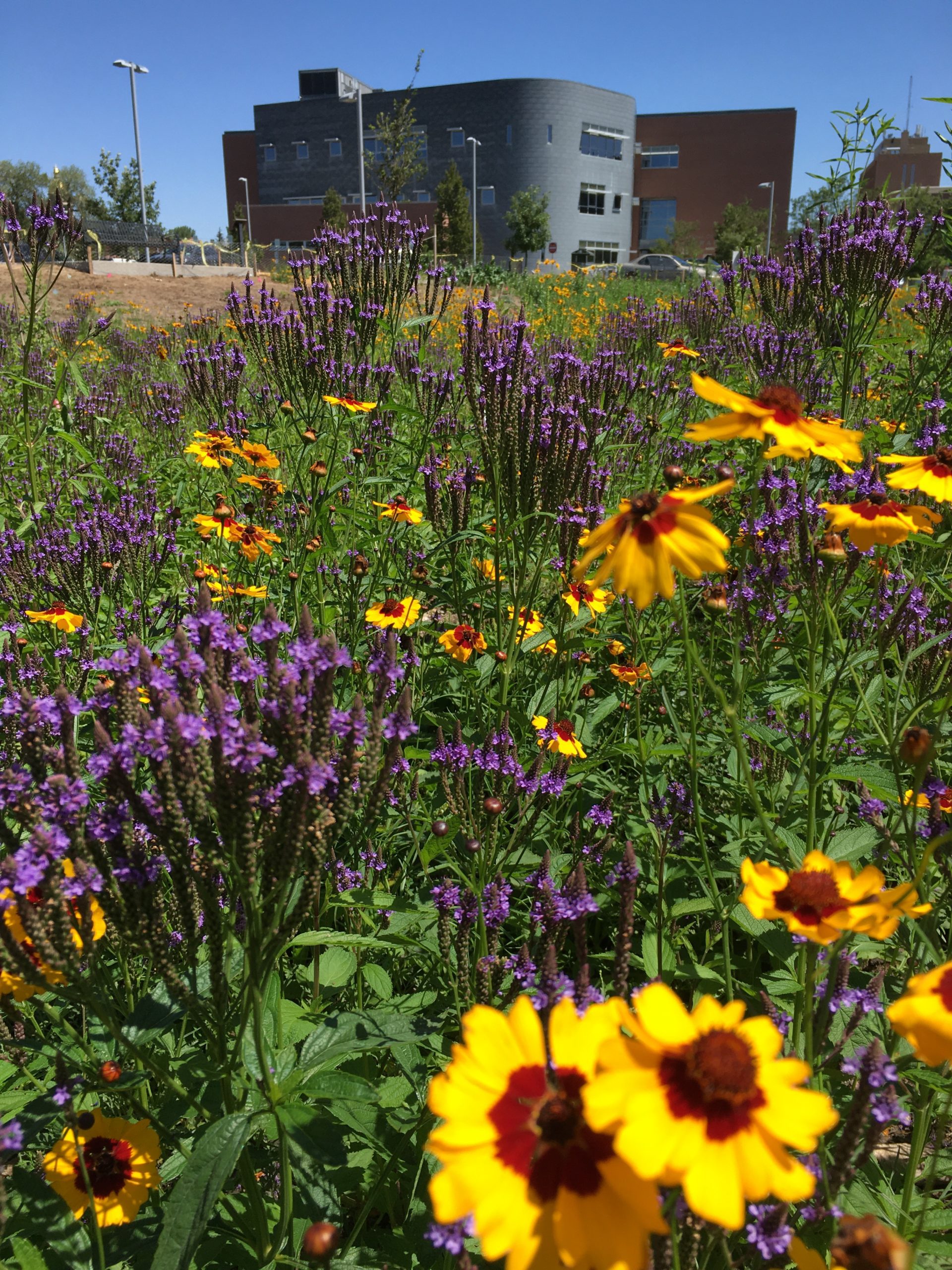Nancy Loomis, the project leader for the Community Wildlife Habitat Project, West Edge District, is returning to our blog for another post in her series about the “Laramie County Library Water-wise and Pollinator Bio-retention System (Project).” Read below to learn about some of the floral additions that were made to the library’s detention pond this summer!
The planting of the library’s detention pond began in mid-May and by mid-June planting was discontinued due to summer heat but will resume in late summer/early fall. Since the spring planting, volunteers have been extremely busy trying to stabilize a very active weed seed bank found in the soil and helping the newly planted native flora become established. Many of the new plants are blooming and attracting pollinators, so let me introduce you to some of the natives.

The photo above shows a green sweat bee foraging in the bloom of a western spiderwort (Tradescantia occidentalis). This plant has narrow strap-like leaves and bright blue/purple, three-petaled blooms. The best time to view the flowers are during the morning before the heat of the afternoon sun causes the flowers to close. This plant is approximately 18” tall and was planted en masse with the intention of eventually creating a taller ground cover in its locality. This plant has a long flowering time (May to September) and can currently be seen blooming on the lower portion of the south facing slope between the two permanent benches. This plant is a native of Laramie County.

The photo above shows the bloom of fragrant evening primrose (Oenothera cespitosa). This plant has large fragrant white flowers (up to 3” in diameter) that open in the latter part of the day or early evening. The flower fades to a deep pink and wilts by the middle of the next day. The flower’s fruity fragrance is most potent during the early evening hours to mid-morning. These plants have a long flowering time (June to August). Many native pollinators, including the sphinx moth, are attracted to the flowers. You can find this plant dispersed in group plantings along the sidewalk of the project area. The largest planting is located at the northwest corner of the site. This plant is a native of Laramie County.

The photo above shows blue vervain (Verbena hastata) and annual coreopsis (Coreopsis tinctoria) in bloom. Blue vervain is a wet meadow plant so it was planted on the bottom of the detention pond near the west end. Annual coreopsis was a gift from the original seeding of the detention area 13 years ago! The seeds remained dormant in the soil until this summer. Blue vervain is a native plant of Laramie County. Annual coreopsis is not a native of Laramie County but is a native of Colorado and Nebraska counties sharing a border with Laramie County to the south and east, respectively.
Nancy Loomis
Project Leader: Community Wildlife Habitat Project, West Edge District

